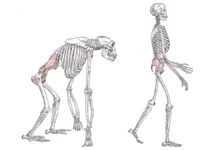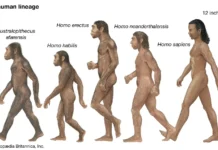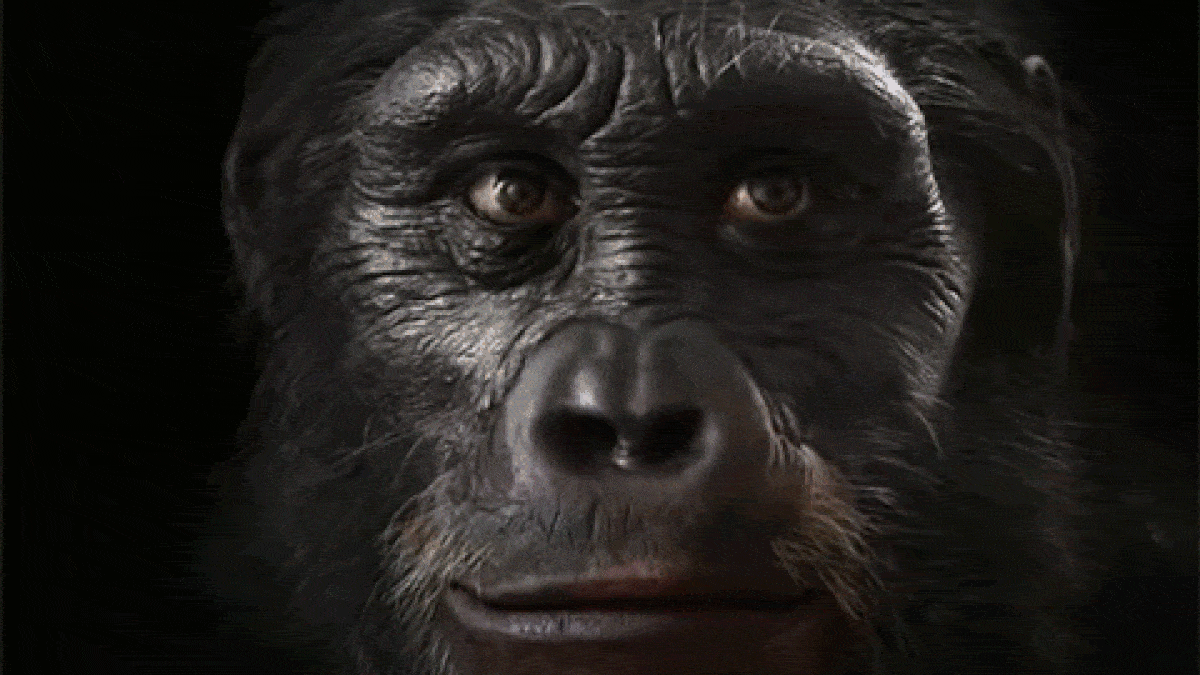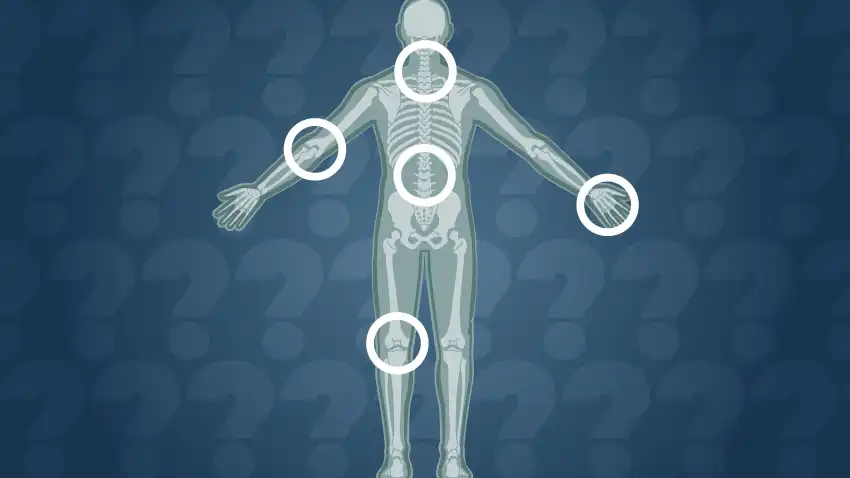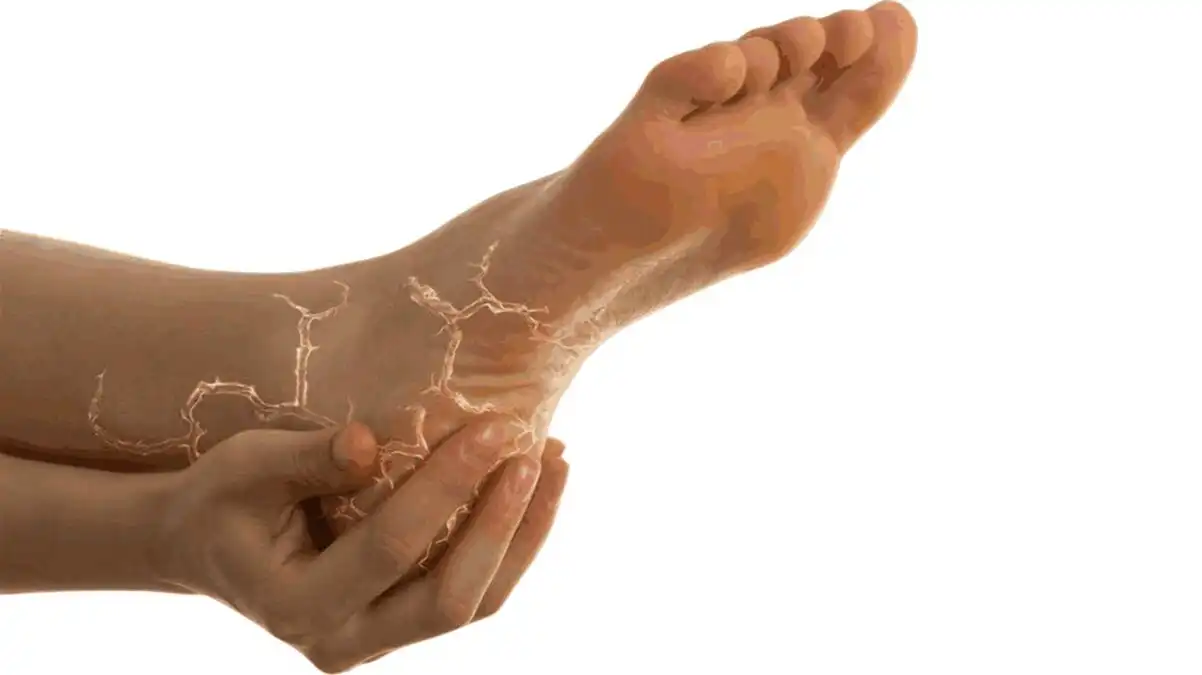Introduction
Overview of Human Evolution: From Homo habilis to Homo erectus
The journey of human evolution is marked by significant milestones, with the transition from Homo habilis to Homo erectus being one of the most pivotal. Homo habilis, often referred to as the “handy man,” lived around 2.4 to 1.4 million years ago and was one of the earliest members of the genus Homo. This species is known for its relatively small body size, larger brain than its predecessors, and the first significant use of stone tools.
Homo erectus, which emerged around 1.9 million years ago, represents a major leap in human evolution. This species was characterized by a larger body size, a more elongated lower limb structure, and a significantly larger brain capacity. Homo erectus also marked the beginning of a more sophisticated use of tools, and evidence suggests that they were the first hominins to control fire and cook food. The physical and behavioral adaptations in Homo erectus laid the foundation for modern human anatomy and behavior.
Relevance of Evolutionary Biomechanics to Modern Osteopathy
Understanding the biomechanics of these evolutionary changes is crucial for modern osteopathy. The shift from Homo habilis to Homo erectus involved significant changes in posture, locomotion, and musculoskeletal structure. These changes, while advantageous in many ways, also introduced new challenges that continue to affect human health today. For instance, the adaptation to bipedalism improved energy efficiency and freed the hands for tool use, but it also increased the risk of lower back pain, knee injuries, and other musculoskeletal issues.
Modern osteopathy, with its focus on the holistic treatment of the musculoskeletal system, can benefit greatly from an understanding of these evolutionary changes. By exploring the biomechanics of our ancestors, osteopaths can gain insights into the root causes of many modern ailments and develop more effective treatments. This article will explore the evolutionary advantages and disadvantages of the transition from Homo habilis to Homo erectus and their implications for modern human health, particularly in relation to osteopathy.
Evolutionary Transition: Key Changes from Homo habilis to Homo erectus
Anatomical Shifts: Height, Limbs, and Posture
The transition from Homo habilis to Homo erectus brought about significant anatomical changes that had profound effects on the biomechanics of these early humans. One of the most notable changes was in height. While Homo habilis stood at an average height of about 3.5 to 4.5 feet, Homo erectus grew to an average of 5 to 6 feet tall. This increase in height was accompanied by a more elongated lower limb structure, which played a crucial role in enhancing the efficiency of bipedal locomotion.

The elongation of the legs, particularly the femur, in Homo erectus was a key adaptation that allowed for longer strides and reduced energy expenditure during walking. The shift from a more ape-like, crouched posture in Homo habilis to a fully upright posture in Homo erectus further optimized the body for efficient movement over long distances. These changes were not just about moving from place to place; they also freed the hands for tool use and other complex tasks, which were vital for the survival and advancement of early humans.
Evolution of Bipedalism: Efficiency and Adaptation
Bipedalism, or the ability to walk on two legs, is one of the defining characteristics of human evolution. While Homo habilis was already bipedal, the species likely moved with a gait that was less efficient than that of Homo erectus. The latter species had a more refined bipedal gait, with a narrow pelvis that facilitated efficient weight transfer during walking and running. This adaptation was crucial for long-distance travel, a key survival strategy for Homo erectus as they migrated out of Africa and into new environments.
The evolution of bipedalism also had implications for other aspects of human anatomy. The shift to an upright posture required changes in the spine, particularly the development of the lumbar curve, which helps to balance the upper body over the hips and legs. However, this adaptation also introduced new stresses on the lower back, which are still common in modern humans.
Craniofacial and Dental Adaptations
The transition from Homo habilis to Homo erectus also involved significant changes in the skull and face. Homo erectus had a more pronounced brow ridge, a larger braincase, and a smaller, more delicate face compared to Homo habilis. These changes reflect both the increase in brain size and the shift to a diet that included more meat and possibly cooked foods, which required less chewing effort and led to a reduction in jaw and tooth size.
These craniofacial adaptations were beneficial in many ways, but they also came with trade-offs. The reduction in jaw size and the realignment of the teeth increased the likelihood of dental issues, such as impacted wisdom teeth, which are common in modern humans. Understanding these changes can help osteopaths address not only musculoskeletal issues but also related problems, such as TMJ disorders, that have their roots in our evolutionary past.
Biomechanical Advantages of the Transition
Enhanced Locomotion and Energy Efficiency
One of the most significant biomechanical advantages of the transition from Homo habilis to Homo erectus was the enhancement in locomotion and energy efficiency. The longer legs, narrower pelvis, and improved stride of Homo erectus allowed for more efficient walking and running, which were critical for survival. As early humans began to hunt and gather over larger areas, the ability to move efficiently over long distances became a key evolutionary advantage.
Homo erectus was well-adapted for endurance running, a trait that likely played a role in their ability to hunt large game. This adaptation also allowed Homo erectus to cover more ground in search of food, water, and shelter, which was particularly important as they expanded into new environments outside of Africa. The energy efficiency of bipedalism in Homo erectus also freed up metabolic energy for other functions, such as brain development, which was crucial for the cognitive advancements that occurred during this period.
Improved Vision and Environmental Awareness
The increase in height that accompanied the transition from Homo habilis to Homo erectus provided a significant advantage in terms of vision and environmental awareness. Standing taller allowed Homo erectus to see over tall grasses and other obstacles in their environment, which was critical for spotting predators, prey, and other resources. This improved vantage point also facilitated communication and social interaction within groups, as individuals could more easily see and signal to each other over longer distances.
The elevated head position also likely enhanced Homo erectus‘ ability to thermoregulate, as more of the body was exposed to cooling winds while less surface area was directly exposed to the sun. This adaptation would have been particularly advantageous in the hot and arid environments that Homo erectus often inhabited.
Freed Hands and the Development of Tool Use
The shift to a more efficient bipedal gait in Homo erectus also had a profound impact on the development of tool use. By fully freeing the hands from the demands of locomotion, Homo erectus was able to engage in more complex and precise tasks, such as creating and using tools. This development marked a significant leap in human evolution, as the ability to manipulate objects with greater dexterity allowed Homo erectus to exploit a wider range of resources and adapt to diverse environments.
The tools used by Homo erectus were more advanced than those of Homo habilis, reflecting an increase in cognitive ability and technological innovation. The Acheulean handaxes associated with Homo erectus are an example of this advancement, showcasing a more standardized and refined tool-making process that would have provided significant survival advantages.
Better Heat Regulation and Cooling Efficiency
Another advantage of the transition to Homo erectus was improved heat regulation and cooling efficiency. The upright posture of Homo erectus reduced the amount of direct sunlight exposure during the hottest parts of the day, while also increasing the surface area available for cooling through sweat evaporation. This adaptation was particularly important in the hot climates where Homo erectus thrived.
The development of a more efficient cooling system likely played a role in enabling Homo erectus to engage in activities such as persistence hunting, where endurance and the ability to dissipate heat effectively were critical for success. This adaptation would have given Homo erectus a significant edge in survival, allowing them to hunt and gather during times when other predators were less active due to heat stress.
Biomechanical Disadvantages and Their Impact on Modern Health
Increased Stress on the Lower Back and Spine
While the transition to bipedalism brought many advantages, it also introduced significant biomechanical disadvantages, particularly in the form of increased stress on the lower back and spine. As Homo erectus adopted a fully upright posture, the curvature of the spine, especially in the lumbar region, became more pronounced to support the weight of the upper body. This adaptation, while necessary for bipedal locomotion, also made the lower back more vulnerable to injury and degeneration.
Modern humans continue to experience the consequences of this evolutionary trade-off. Lower back pain is one of the most common musculoskeletal complaints, affecting millions of people worldwide. The stresses placed on the lumbar spine by standing and walking upright, combined with modern lifestyle factors such as prolonged sitting and poor posture, contribute to the high prevalence of lower back disorders. Understanding the evolutionary origins of these issues can help osteopaths develop more effective treatments and preventive strategies.
Challenges in Childbirth Due to Pelvic Changes
The anatomical changes associated with bipedalism also had significant implications for childbirth. The narrowing of the pelvis in Homo erectus, which was necessary for efficient bipedal locomotion, created a tighter birth canal. At the same time, the increase in brain size that began with Homo erectus meant that infants had larger heads, making childbirth more challenging and dangerous.
This “obstetric dilemma” is still a significant issue for modern humans. The tight fit between the infant’s head and the mother’s pelvis can lead to complications during labor and delivery, including prolonged labor, the need for surgical intervention, and an increased risk of maternal and infant mortality. Osteopathic care can play a role in supporting women during pregnancy and childbirth, helping to alleviate some of the physical stresses associated with these evolutionary challenges.
Knee and Joint Stress: Implications for Modern Humans
The evolution of bipedalism also placed new stresses on the knees and other lower limb joints. In Homo erectus, the knee joint had to support the full weight of the body during walking and running, which increased the risk of wear and tear on the joint surfaces. This adaptation, while necessary for upright locomotion, also made the knees more susceptible to injury and degenerative conditions such as osteoarthritis.
Modern humans continue to face these challenges, with knee pain and joint degeneration being common issues, particularly in older adults and those who engage in high-impact activities. The increased prevalence of obesity in modern societies has also exacerbated these problems, as excess weight places additional stress on the knee joints. Osteopaths can help address these issues by providing treatments that improve joint function, reduce pain, and prevent further degeneration.
Foot Problems and the Evolutionary Trade-Offs
The transition to bipedalism also led to significant changes in the structure of the foot. In Homo erectus, the foot evolved to support the body’s weight during upright walking, with the development of arches to absorb shock and provide stability. However, these changes also introduced new vulnerabilities, including a higher risk of foot problems such as plantar fasciitis, fallen arches, and stress fractures.
Modern footwear, which often does not support the natural shape and function of the foot, has further contributed to these issues. Many people experience chronic foot pain and related musculoskeletal problems due to poor footwear choices and the hard surfaces they walk on daily. Osteopathic treatment can help alleviate foot pain and correct biomechanical issues, promoting better overall musculoskeletal health.
Linking Evolution to Modern Osteopathy
How Evolutionary Changes Influence Common Musculoskeletal Issues
The evolutionary transition from Homo habilis to Homo erectus has left a lasting impact on the human musculoskeletal system. The adaptations that allowed our ancestors to walk upright, run efficiently, and use tools have also introduced a range of biomechanical challenges that continue to affect modern humans. Many of the common musculoskeletal issues treated by osteopaths today, such as lower back pain, joint degeneration, and foot problems, can be traced back to these evolutionary changes.
Understanding the evolutionary origins of these issues provides valuable insights for osteopaths. For example, the lumbar curve, which evolved to support an upright posture, is a key factor in lower back pain. By understanding how this curve developed and the stresses it is subjected to, osteopaths can better diagnose and treat lower back disorders. Similarly, the structural changes in the knee and foot that facilitated bipedalism also make these joints more vulnerable to injury and degeneration, which osteopaths can address through targeted treatments.
The Role of Osteopathy in Addressing Evolutionary Disadvantages
Osteopathy, with its holistic approach to health and wellness, is well-suited to address the biomechanical disadvantages that have arisen from our evolutionary history. Osteopaths use a variety of techniques to assess and treat musculoskeletal issues, focusing on improving function, reducing pain, and promoting overall health. By understanding the evolutionary context of these issues, osteopaths can provide more effective care that addresses the root causes of the problems, rather than just treating the symptoms.
For example, osteopaths can help patients improve their posture and alignment, which can alleviate stress on the lower back and other joints. They can also provide guidance on proper footwear and body mechanics, helping patients prevent foot problems and reduce the risk of injury. In addition, osteopathic treatment can support pregnant women by addressing the musculoskeletal stresses associated with childbirth, making the process safer and more comfortable.
Case Studies: Modern Applications of Osteopathic Treatment
To illustrate the practical applications of these insights, consider the following case studies:
- Case Study 1: Lower Back Pain in an Office Worker A 45-year-old office worker presents with chronic lower back pain, exacerbated by prolonged sitting and poor posture. An osteopathic assessment reveals a pronounced lumbar curve and tightness in the lower back muscles, both of which are contributing to the pain. The osteopath uses a combination of manual therapy, stretching exercises, and ergonomic advice to alleviate the pain and improve the patient’s posture. By understanding the evolutionary origins of the lumbar curve and the stresses it faces in modern life, the osteopath is able to provide targeted, effective treatment.
- Case Study 2: Knee Pain in a Runner A 30-year-old runner presents with knee pain that has been worsening over the past few months. The osteopath identifies that the pain is due to overuse and improper alignment of the knee joint, exacerbated by the repetitive stress of running. Through manual therapy, strengthening exercises, and advice on proper running form, the osteopath helps the patient reduce pain and prevent further injury. Understanding the evolutionary adaptations of the knee joint helps the osteopath address the underlying biomechanical issues contributing to the pain.
These case studies highlight the importance of integrating evolutionary insights into modern osteopathic practice, allowing osteopaths to provide more effective and holistic care.
The Osteopathic Perspective: Mitigating Evolutionary Challenges
Strategies for Improving Posture and Reducing Joint Stress
Given the biomechanical challenges inherited from our evolutionary past, improving posture and reducing joint stress are critical for maintaining musculoskeletal health. Osteopaths can play a key role in helping patients develop better posture and movement patterns, which can alleviate the stresses placed on the spine, knees, and other joints.
One of the most effective strategies for improving posture is education. Osteopaths can teach patients about the importance of maintaining a neutral spine, keeping the head aligned over the shoulders, and avoiding slouching or forward head posture. These principles are particularly important for people who spend long hours sitting at a desk or using digital devices, as poor posture in these positions can exacerbate the stresses on the spine and lead to chronic pain.
In addition to education, osteopaths can use manual therapy techniques to release tight muscles and realign the spine, helping to correct postural imbalances. They can also recommend exercises that strengthen the core muscles, which support the spine and help maintain good posture throughout the day.
Osteopathic Techniques for Managing Back Pain and Spinal Issues
Back pain is one of the most common complaints that bring patients to osteopathic clinics, and it is often related to the stresses placed on the spine by bipedalism. Osteopaths use a variety of techniques to manage back pain and spinal issues, including spinal manipulation, soft tissue massage, and mobilization of the joints.
Spinal manipulation involves applying controlled force to specific joints in the spine, with the goal of improving joint mobility and reducing pain. This technique can be particularly effective for patients with lower back pain, as it helps to relieve pressure on the nerves and reduce muscle tension. Soft tissue massage can also be used to release tight muscles and improve circulation, which can further alleviate pain and promote healing.
In addition to these hands-on techniques, osteopaths may also recommend exercises to strengthen the muscles that support the spine, improve flexibility, and prevent future episodes of back pain. These exercises can include stretching, core strengthening, and aerobic conditioning, all of which contribute to better spinal health.
Preventive Care: Addressing the Biomechanical Legacy of Our Ancestors
Preventive care is a key component of osteopathic practice, and it is particularly important when addressing the biomechanical challenges inherited from our ancestors. By helping patients develop healthy habits and addressing issues before they become serious problems, osteopaths can reduce the risk of injury and improve overall quality of life.
One of the most important aspects of preventive care is education. Osteopaths can teach patients about the importance of regular physical activity, proper body mechanics, and maintaining a healthy weight, all of which can reduce the stress on the joints and spine. They can also provide guidance on ergonomic setups for workstations, footwear choices, and other lifestyle factors that influence musculoskeletal health.
In addition to education, osteopaths can perform regular assessments to identify and address any emerging issues before they become more serious. This might include checking for postural imbalances, joint misalignments, or muscle weaknesses, and providing treatment or exercises to correct these problems early on.
By taking a proactive approach to care, osteopaths can help patients manage the biomechanical legacy of our ancestors and maintain better musculoskeletal health throughout their lives.
Conclusion
Reflecting on the Evolutionary Journey from Homo habilis to Homo erectus
The transition from Homo habilis to Homo erectus marks a significant chapter in human evolution, characterized by crucial anatomical and biomechanical changes. These adaptations enabled early humans to walk upright, use tools more effectively, and expand into diverse environments. However, these evolutionary advancements came with trade-offs, including increased stress on the spine, knees, and other joints—issues that continue to affect modern humans.
Understanding these evolutionary changes is essential for modern osteopathy. By tracing the roots of common musculoskeletal problems back to our ancestors, osteopaths can gain deeper insights into the causes of these issues and develop more effective treatments. The challenges our ancestors faced, from the complexities of bipedalism to the narrowing of the pelvis, still influence our health today. Osteopathy, with its holistic approach to treating the musculoskeletal system, is uniquely positioned to address these inherited challenges.
Incorporating an evolutionary perspective into osteopathic practice allows for a more comprehensive approach to patient care. By recognizing the biomechanical legacy of our ancestors, osteopaths can help patients manage and prevent issues that have been part of the human condition for millions of years. This understanding not only enhances the effectiveness of osteopathic treatments but also empowers patients to take proactive steps in maintaining their musculoskeletal health.
As we continue to evolve, both as a species and in our understanding of health, the lessons from our past remain ever relevant. The story of Homo habilis and Homo erectus reminds us that the path to becoming human is marked by both triumphs and challenges—challenges that modern osteopathy is well-equipped to help us overcome.
References
Books and Articles on Human Evolution:
- Lieberman, D. E. (2011). The Evolution of the Human Head. Harvard University Press.
- This book provides a comprehensive overview of the anatomical changes that occurred during human evolution, including the transition from Homo habilis to Homo erectus and its impact on craniofacial structure.
- Aiello, L. C., & Dean, C. (1990). An Introduction to Human Evolutionary Anatomy. Academic Press.
- This textbook is a key resource for understanding the anatomical and biomechanical changes in human evolution, with specific sections on the differences between Homo habilis and Homo erectus.
- Wood, B. A. (2007). The Evolution of Early Homo: An Integrated Biological Perspective. Springer.
- This book offers detailed insights into the evolutionary biology of early hominins, focusing on the physical and behavioral adaptations that marked the transition from Homo habilis to Homo erectus.
- Walker, A., & Leakey, R. E. (Eds.). (1993). The Nariokotome Homo Erectus Skeleton. Harvard University Press.
- This book presents an in-depth analysis of the most complete Homo erectus skeleton ever found, providing valuable information on the species’ biomechanics and its evolutionary significance.
Scientific Articles:
- Bramble, D. M., & Lieberman, D. E. (2004). “Endurance running and the evolution of Homo.” Nature, 432(7015), 345-352.
- This article explores how the evolution of Homo erectus was influenced by adaptations for endurance running, highlighting the biomechanical changes that made this possible.
- Haeusler, M., & McHenry, H. M. (2004). “Body proportions of Homo habilis reviewed.” Journal of Human Evolution, 46(4), 433-465.
- This paper reviews the body proportions of Homo habilis, comparing them to later hominins like Homo erectus and discussing the implications for bipedalism and locomotion.
- Richmond, B. G., & Jungers, W. L. (2008). “Osteology and biomechanics of the genus Homo.” American Journal of Physical Anthropology, 135(S47), 3-15.
- This article provides an overview of the osteological and biomechanical features of the genus Homo, with a focus on the adaptations seen in Homo erectus.
- Van Arsdale, A. P., & Wolpoff, M. H. (2013). “A single lineage in early Pleistocene Homo: size variation continuity in early Pleistocene Homo crania from East Africa and Georgia.” Evolutionary Anthropology: Issues, News, and Reviews, 22(3), 201-211.
- This study discusses the size variation and continuity in early Homo species, providing insights into the evolutionary transition from Homo habilis to Homo erectus.
Research on Osteopathy and Evolution:
- Hildebrand, M., & Goslow, G. E. (2001). Analysis of Vertebrate Structure. Wiley.
- This textbook includes sections on vertebrate biomechanics, which can be applied to understanding the evolutionary adaptations in Homo erectus and their relevance to modern osteopathy.
- Okeson, J. P. (2012). Management of Temporomandibular Disorders and Occlusion. Elsevier.
- This book is a key resource for understanding TMJ disorders, which are partly influenced by evolutionary changes in craniofacial structure. It provides practical insights into the diagnosis and treatment of these conditions.
- Pilloud, M. A., & Larsen, C. S. (2011). “‘Stress’ and the adaptation of early Homo.” Journal of Human Evolution, 60(5), 590-595.
- This paper discusses the physical stress factors that early Homo species faced and how these factors have shaped modern human health challenges, particularly those related to musculoskeletal stress.
Additional Resources:
- American Osteopathic Association. (2021). “Osteopathic Medicine: What D.O.s Do.” https://osteopathic.org/
- Provides an overview of osteopathic medicine, including how osteopaths address musculoskeletal issues related to evolutionary adaptations.
- The Human Origins Program, Smithsonian National Museum of Natural History. (2021). “What does it mean to be human?” https://humanorigins.si.edu/
- A valuable resource for understanding human evolution and the significance of biomechanical changes in early hominins.



